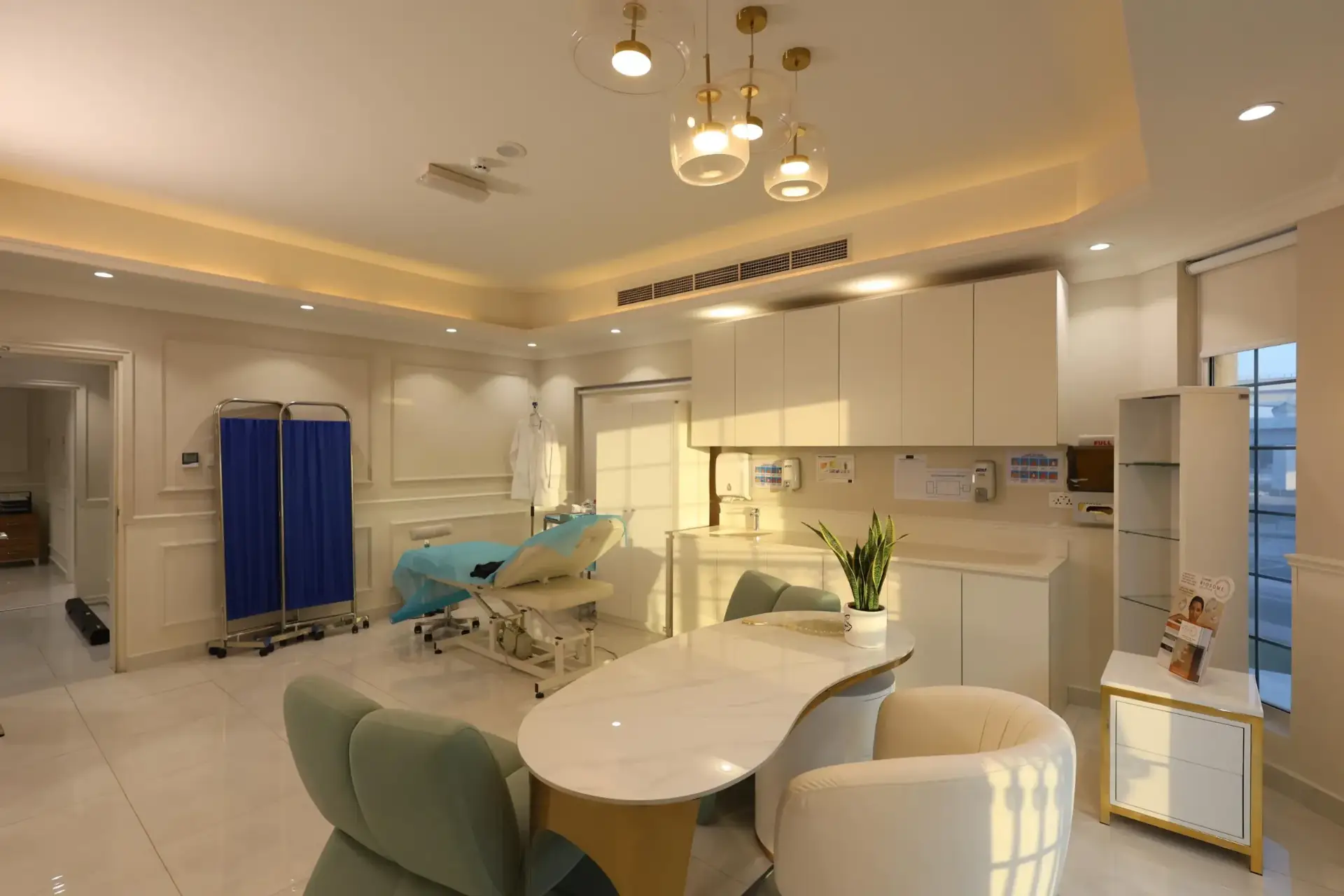Selecting the right medical center for aesthetic treatments or healthcare needs is a crucial decision that impacts both your results and overall experience. With Dubai’s growing number of medical facilities, making an informed choice requires careful consideration of multiple factors. This comprehensive guide will help you navigate the selection process with confidence.
Why Choosing the Right Medical Center Matters
Your choice of medical center directly influences treatment outcomes, safety standards, and long-term satisfaction. A wrong decision can lead to disappointing results, unnecessary complications, or additional corrective procedures. According to Dubai Health Authority statistics, patients who research thoroughly before selecting a facility report 40% higher satisfaction rates.
The investment you make extends beyond financial considerations—it’s about trusting professionals with your health and appearance. Whether seeking Botox, dermal fillers, laser treatments, or physiotherapy, the right center makes all the difference.
1. Verify Credentials and Licensing
Check Regulatory Compliance
Begin by confirming the facility holds current licensing from Dubai Health Authority (DHA) or relevant UAE health regulators. Licensed centers must meet strict operational standards, maintain proper insurance, and undergo regular inspections.
Essential credentials to verify:
- DHA facility license number
- Medical practice permits
- International accreditations (JCI, ISO)
- Insurance coverage details
- Emergency protocol certifications
Research Practitioner Qualifications
Beyond facility licensing, investigate individual practitioners. Qualified specialists should hold:
- Board certification in relevant specialties
- Active medical licenses in UAE
- Specialized training certificates for specific procedures
- Membership in professional associations
- Continuous education records
2. Evaluate Technology and Equipment
Modern Equipment Standards
Leading medical centers invest in FDA and CE-approved equipment. Outdated technology often means longer recovery times, less precise results, and increased discomfort. When researching, inquire about specific devices and their manufacture dates.
Technology indicators to assess:
- Equipment age and maintenance schedules
- Availability of latest treatment modalities
- Backup systems for critical devices
- Sterilization and safety protocols
- Investment in emerging technologies
Treatment Range and Specialization
Comprehensive centers offering multiple services under one roof provide convenience and continuity of care. However, ensure they maintain expertise across all offered treatments rather than being generalists without depth.
3. Assess the Consultation Process
Initial Consultation Quality
A thorough consultation demonstrates the center’s commitment to personalized care. Professional facilities never rush this crucial step. During consultation, experienced practitioners should:
- Conduct detailed medical history review
- Perform physical assessments when relevant
- Discuss realistic expectations openly
- Explain treatment options comprehensively
- Provide written treatment plans
- Address all concerns patiently
Transparency in Communication
Reputable centers maintain clear communication throughout your journey. They provide:
- Detailed procedure explanations
- Honest risk discussions
- Realistic timeline expectations
- Clear aftercare instructions
- Multiple communication channels
- Prompt response to queries
4. Research Patient Reviews and Results
Analyzing Online Reviews
While individual experiences vary, patterns in reviews reveal consistent strengths or weaknesses. Focus on:
- Recent reviews (within 6 months)
- Detailed experiences over generic praise
- Response patterns to negative feedback
- Consistency across multiple platforms
- Verified patient status
Before-and-After Portfolios
Legitimate centers showcase genuine patient results with proper consent. Evaluate portfolios for:
- Variety of cases similar to yours
- Consistent quality across different practitioners
- Realistic, natural-looking outcomes
- Proper photo documentation standards
- Time-stamped progression images
5. Consider Location and Accessibility
Convenience Factors
Treatment often requires multiple visits. Consider:
- Distance from home or work
- Parking availability
- Public transportation access
- Operating hours flexibility
- Emergency accessibility
- Privacy and discretion measures
Facility Environment
The physical environment reflects overall standards. Premium centers maintain:
- Clean, modern facilities
- Comfortable waiting areas
- Private consultation rooms
- Advanced treatment suites
- Proper ventilation systems
- Accessibility features
6. Understand Pricing and Financial Policies
Transparent Pricing Structure
Avoid centers with unclear pricing. Professional facilities provide:
- Detailed cost breakdowns
- Written quotations
- Package options explanation
- Payment plan availability
- Insurance coverage clarification
- No hidden fees guarantee
Value Versus Cost
The cheapest option rarely delivers optimal results. Consider total value including:
- Quality of materials used
- Practitioner expertise level
- Technology sophistication
- Aftercare support included
- Warranty or guarantee policies
- Long-term result durability
7. Evaluate Safety Protocols
Infection Control Measures
Post-pandemic, safety standards have evolved significantly. Confirm:
- Sterilization procedures
- Single-use equipment policies
- Staff health monitoring
- Patient screening protocols
- Emergency response preparedness
- Incident reporting systems
Complication Management
Professional centers have clear protocols for managing potential complications:
- 24/7 emergency contact availability
- Established referral networks
- Comprehensive insurance coverage
- Documented incident procedures
- Patient advocacy support
8. Examine Aftercare Support
Post-Treatment Services
Quality care extends beyond the procedure. Leading centers offer:
- Scheduled follow-up appointments
- Progress monitoring systems
- Adjustment services if needed
- Complication management
- Long-term maintenance plans
- Patient education resources
Ongoing Relationship
The best medical centers view patient relationships as long-term partnerships, providing:
- Continuity of care
- Treatment history maintenance
- Evolving treatment plans
- Loyalty programs
- Regular check-ins
- Educational updates
Red Flags to Avoid
Warning Signs
Be cautious of centers displaying:
- Pressure for immediate decisions
- Unusually low prices
- Guarantee of unrealistic results
- Reluctance to show credentials
- Poor online presence
- No consultation requirement
- Cash-only payment demands
- Evasive communication
- Unlicensed practitioners
- Outdated facilities
Making Your Final Decision
Decision Framework
After gathering information, evaluate each center against your priorities:
- Safety First: Never compromise on safety standards
- Expertise Match: Ensure specialization aligns with your needs
- Comfort Level: Trust your instincts about the team
- Value Proposition: Balance quality with affordability
- Convenience: Consider practical aspects
- Long-term Relationship: Choose a center for ongoing care
Trust Your Instincts
Beyond objective criteria, trust your comfort level with the facility and team. The right medical center makes you feel:
- Heard and understood
- Safe and confident
- Informed and empowered
- Valued as an individual
Conclusion
Choosing the right medical center requires research, patience, and careful consideration. By evaluating credentials, technology, patient experiences, and safety protocols, you can make an informed decision that ensures optimal results and peace of mind.
Remember that quality medical care is an investment in your health and confidence. Take time to find a center that aligns with your values, meets your needs, and exceeds your expectations. Your future self will thank you for the diligence invested today.

